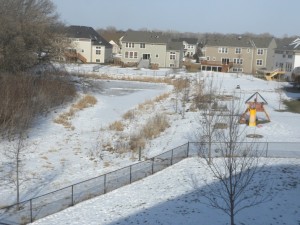
It’s often said there are 3 L’s in real estate, location…location…location. Unfortunately, many times, in order for a home to be located in a desirable location, builders constructed them on land that for a long time had been rejected because of unstable or wet soil. Or other times, homes were built intentionally adjacent to lakes, rivers, and wet lands because of the privacy and beauty. With populations increasing and prime undeveloped land decreasing, contractors, real estate agents and homeowners turned to building on this premium land foregoing previous concerns about soil stability and a high water table. By engineering the foundation and installing sophisticated water management systems these homes cost more, but being in the right location topped this concern by a mile.
Are you starting to hear these homes say…
Basement moisture or foundation settlement?

Sadly, many of these homes were poorly engineered and the water control systems were either non-existent, incomplete, or have failed. This makes for a messy situation or what I like to call “home inspector job security.” Remember that in home inspection there are 3 M’s, moisture…moisture…moisture. Actually, on second thought let’s make it 4 M’s.
But what can real estate agents or homeowners look for on the outside of the home that would indicate this problem exists on the inside. Or just as important, if the moisture condition doesn’t exist in the basement or crawl space now, there is a high risk that it will soon.

Here are some very reliable signs:
- Cattails on or near the site
- Adjacent to wetlands, swamps & outlots
- Built on flat or low lying land
- Settled soils around the perimeter of the home
- Settled concrete walks & steps
- Long gutter downspout extensions (8’ or more)
- Long sump pump discharge pipes (10’ or more)
What these clues are telling you is the soil is unstable and wet. That the bottom elevation of the home is either near the water table or many times it is in the water table. With rain and snow thaws the surface water will become sub surface causing the water table to rise.
And when it does, ground water will be forced up through the floor slab, foundation walls, and flood the basement. How did I know this was going to happen…because the house whispered to me!





